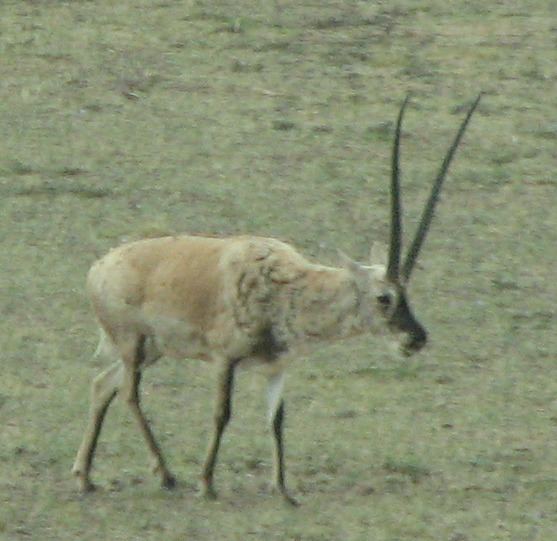Location China Established 1993 | Area 334,000 km² | |
 | ||
Changtang National Nature Reserve (羌塘国家级自然保护区) lies in the northern Tibetan Plateau. It is the second largest nature reserve in the world, after the Northeast Greenland National Park, with an area of over 334,000 km2 (129,000 sq mi), making it bigger than 183 countries. Administratively, it lies in Xainza County and Biru County of the Nagqu Prefecture. With the more recently established adjoining reserves listed below there is now a total of 496,000 km. (191,507 sq. miles) of connected Nature Reserves, which represents an area almost as large as Spain and bigger than 197 other countries.
Contents
Geography
The Changtang (Tibetan for "Northern plain") is a massive high-altitude plateau stretching from Ladakh in India, across northern Tibet into Qinghai Province, and north into the Nanshan mountains of Xinjiang Province. The Changtang Nature Reserve includes most of the Chinese portion of the plateau.
The average altitude is over 4,800 metres (16,000 feet) with "high rolling hills, and plains interspersed by mountains over 20,000 feet [6,000 metres] high." It is extremely cold in winter with temperatures dropping to minus 40 degrees at night. Travel is easier in the winter because summer can be very wet and vehicles get bogged easily.
New reserves bordering the Changtang Nature Reserve have been added in recent years:
In addition, there are two more proposed reserves on the borders of the Changtang Nature Reserve: to the south of the Kekexili Reserve, and to the west of the Mid-Kunlun Reserve. If these proposed new reserves are established, the vast majority of the range of the Chiru, and almost all the spring migration routes of the female Chiru will be protected.
History
The Changtang Nature Reserve was originally established in 1993, with assistance from the internationally renowned animal behaviourist, George Shaller, from the northern, sparsely inhabited Tibetan Changtang plateau. It was upgraded to a "National Protected Area" in 2000. It is listed as an IUCN Category: VI - Managed Resource Protected Area.
Population
It is home to only a few Tibetan nomads and various park staff hired to prevent poaching.
Flora and fauna
Here are some of the last remaining herds of wild ungulates: wild yak (Bos grunniens), Tibetan wild ass or kiang (Equus kiang), Himalayan blue sheep or Bharal (Pseudois nayaur), Argali (Ovis ammon), Mongolian gazelle (Procapra gutturosa) and Tibetan antelope or chiru (Pantholops hodgsonii). Chiru wool is considered the finest known, and is smuggled, especially to Kashmir, India where it is woven into shahtoosh shawls. Predators include snow leopards (Panthera uncia or Uncia uncia), Tibetan wolves (Canis lupus chanco), Turkestan lynx (Lynx lynx isabellinus) and Tibetan blue bears (Ursus arctos pruinosus). At the bottom end of the food chain are large numbers of pika (Ochotona spp.).
The vegetation is open shrubland and grasslands mainly dominated by Stipa grasses and Kobresia species ("bog sedges").
